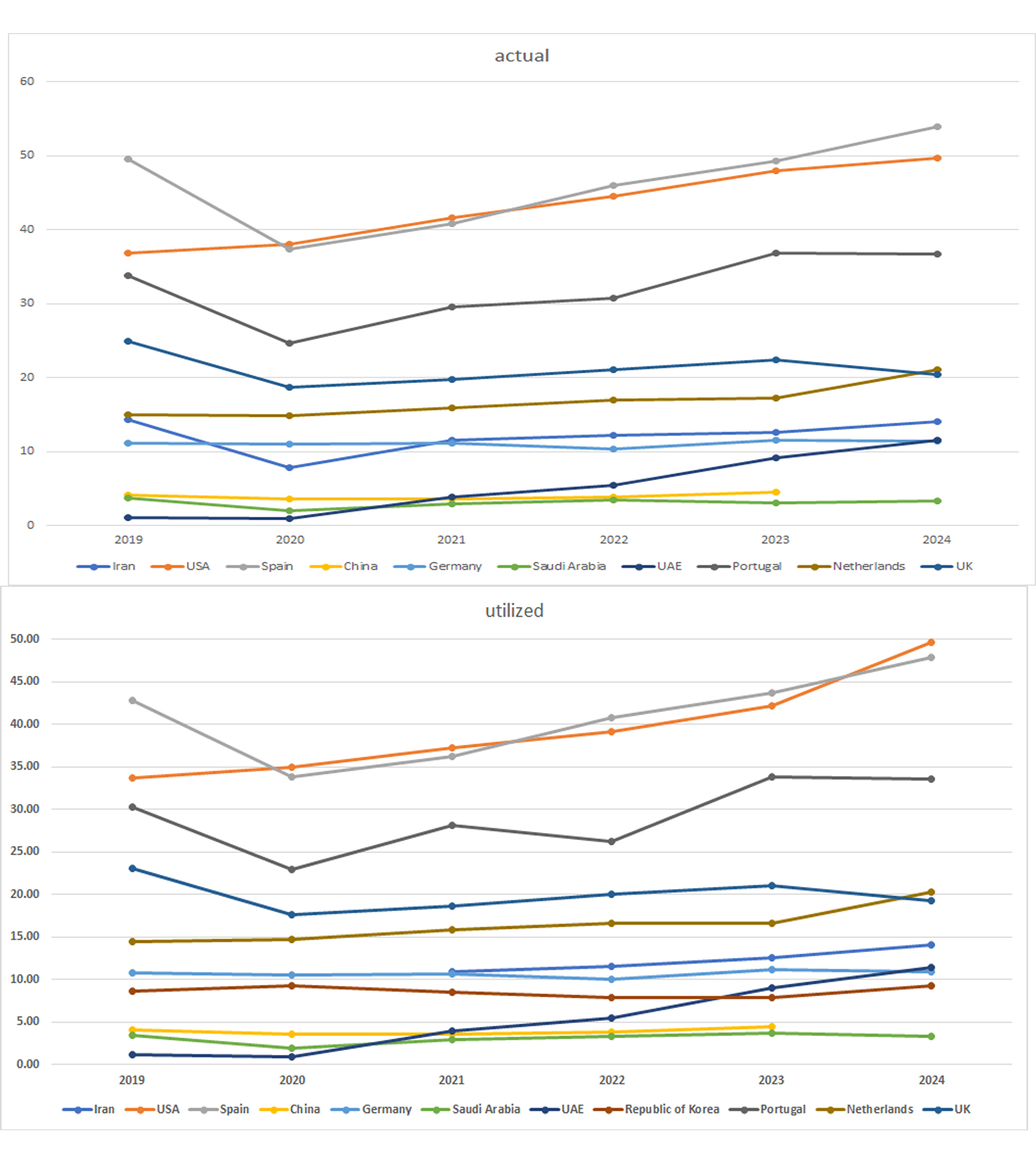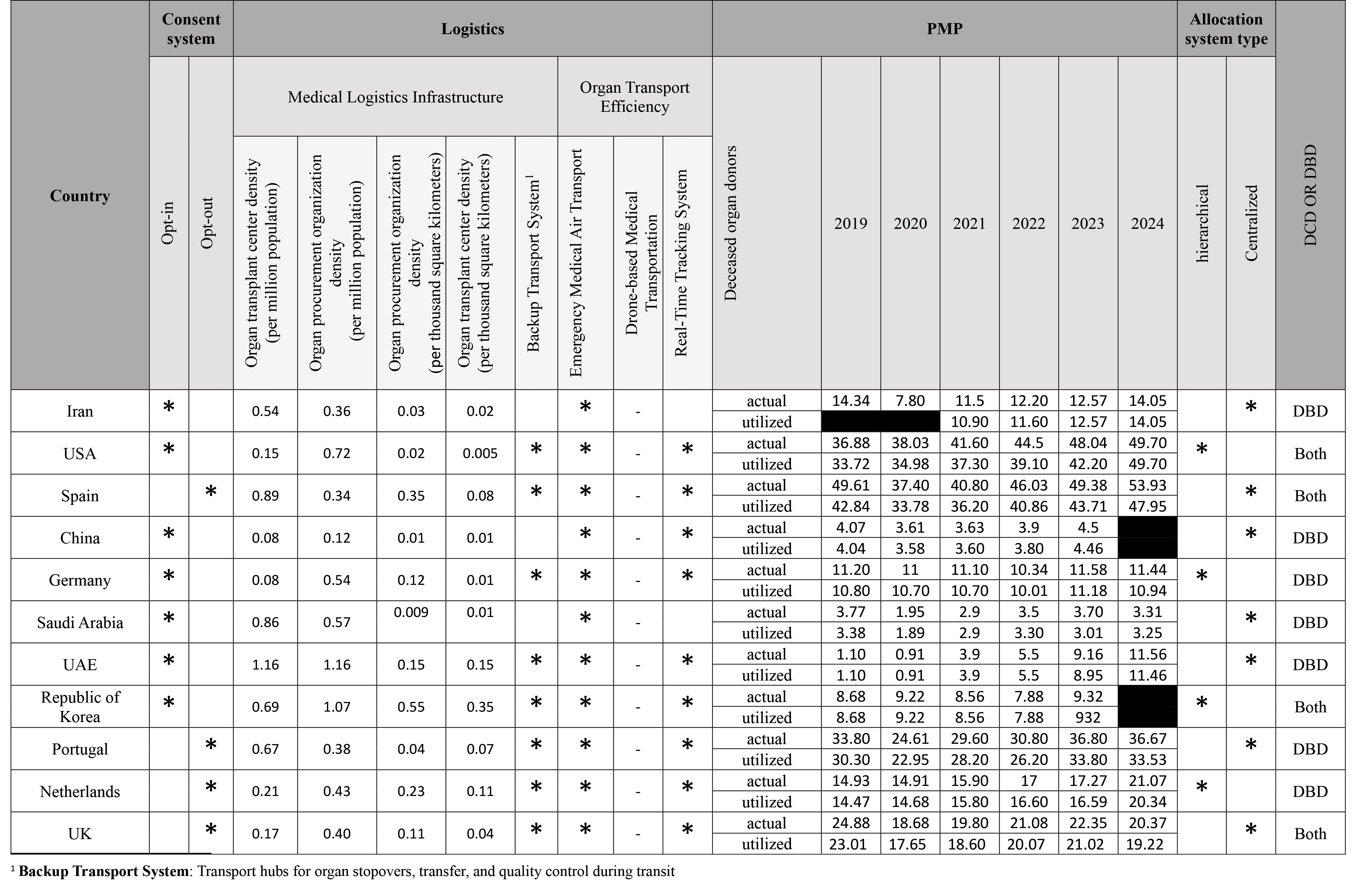A comparative study of global organ donation systems: Pathways to improvement
Sajad Eslami1, Sorour Moeinian 1, Sajedeh Alibabab1, Reyhaneh Askarianzadeh2, Ehsan Radi3, Reza Ramezanian1, Katayoun Najafizadeh3.
1Department of Industrial Engineering, K. N. Toosi University of Technology, Tehran, Iran, Tehran, Iran; 2Department of Industrial Engineering, Shahed University, Tehran, Iran, Tehran, Iran; 3Organ donation, Iranian Research Center of Organ Donation, Tehran, Iran
Introduction: Organ donation and transplantation systems differ globally due to diverse legal, structural, and technological models. Comparing these models helps identify strengths, challenges, and opportunities, particularly for improving systems in developing countries. This study aims to support strategy development through comparative analysis of global transplant systems.
Method: A cross-country comparative analysis was conducted using data from the WHO, Global Organ Donation Network, and other sources. Key indicators included: Density of procurement and transplant units, Donors per million population (PMP), Backup transport systems, Consent system type (opt-in/opt-out), Allocation system (centralized/hierarchical), Real-time tracking systems, Type of post-mortem donation (DCD/DBD).
Quantitative and qualitative data were reviewed to identify patterns, similarities, and differences across systems.
Results: Despite shared logistical elements, countries exhibit varied donor and transplant rates and structural effectiveness:
USA: The UNOS system (1984) employs a centralized, distance-based allocation model, enhancing efficiency.
Spain: A leader due to its ONT organization, presumed consent law, and digital tools.
Portugal & Netherlands: Achieved notable growth through real-time systems and legal reforms.
UK: Established NHS Blood and Transplant (2005) and adopted Deemed Consent (2020), promoting DCD practices.
Iran: Developed the OTRI organ allocation system.
Germany: Member of Eurotransplant since 1997, facilitating regional organ sharing.
China & Saudi Arabia: Launched national platforms (COTRS in 2015, SCOT in 2014), improving identification and allocation of brain-dead donors.
According to Figure 1, the rates of actual donors and utilized donors were examined and compared across various countries within the 2019-2024 timeframe.

Other relevant indicators are evaluated in Table 1.

Discussion: Based on the study results, the United States, Spain, and the United Kingdom possess stable systems that have led to significant improvements in organ donation and transplantation rates. These countries have managed to enhance the efficiency of this process by utilizing effective consent laws, advanced digital systems, and centralized organ allocation models.
On the other hand, countries such as Germany, the UAE, the Netherlands, and Portugal have witnessed remarkable growth through structural reforms and novel technologies in their transplant systems. Conversely, countries like Saudi Arabia, Iran, and China require structural changes and the establishment of more centralized and effective networks. In geographically large countries, it is suggested that regionalization under the supervision of organ procurement units could help improve their performance. These findings can pave the way for developing scientific and effective solutions to enhance organ donation and transplantation systems in various countries.
[1] Organ Donation Systems
[2] Transplantation Systems
[3] Organ Donation Networks